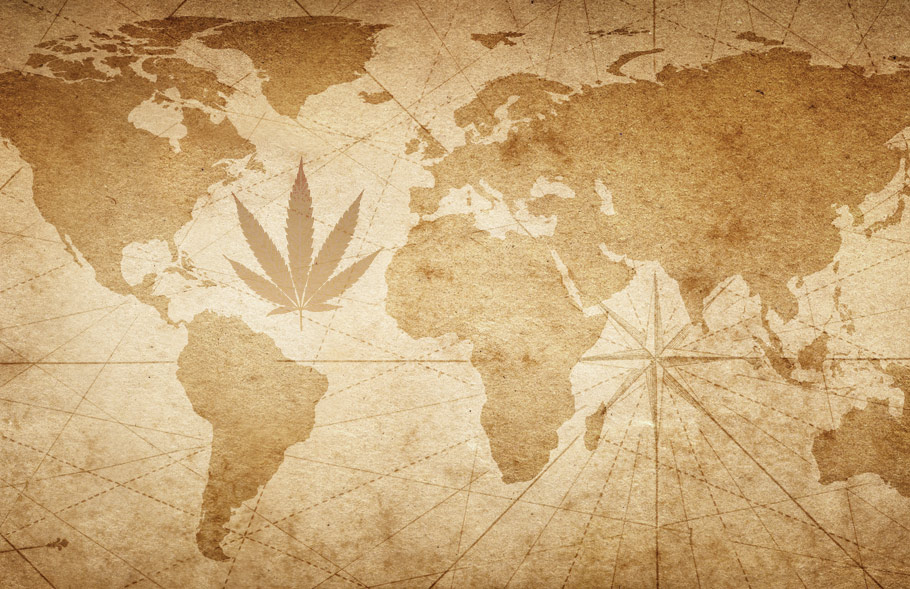Ancient Days
Although precise histories differ, cannabis cultivation is generally believed to have begun in Asia thousands of years ago. There is evidence, for example that the people in China began cultivating cannabis between the years 8,000 and 6,000 BC.Cannabis: Evolution and Ethnobotany, by Robert. C. Clarke and Mark D. Merlin, and published in 2013, documents the cultivation of cannabis during a period in human history when civilization was at its very beginning. In the preface to the book, one of the author’s notes, “The culturally valuable and often irreplaceable goods derived from cannabis deeply influenced the commercial, medical, ritual, and religious practices of cultures throughout the ages, and human desire for these commodities directed the evolution of the plant toward its contemporary varieties.” In ancient China, cannabis was a part of daily life.Besides being an early adopter of cannabis, ancient Chinese culture had many proponents of the herb, including the emperor Shennong, a semi-mythological figure who is credited by some as the man who invented agricultural tools like the plough. Shennong is also credited for developing irrigation techniques, learning the importance of preserving certain seeds and creating the first farmer’s markets to sell fresh produce. The emperor’s medical text lists cannabis as one of the 365 medicines that was most valuable to health and according to at least one modern website, the emperor “claimed cannabis to be harmless and said that, if taken in the right dose over a prolonged period of time, it would allow the communication with spirits.”According to modern authorities on the subject, “His affection for the plant and the invention of agriculture strongly suggest this period in time to be the one during which cannabis was first purposefully cultivated by humans”—at least that was the recent determination made by the modern cannabis mavens at straininsider.com.Spreading the Love
By the time the year 2,000 BC rolled around, the use of cannabis spread out of central Asia and into places like Japan, the Middle East and the Indian Subcontinent. Nomadic tribes and a flourishing trade route into and out of central China are generally credited with the herb’s spread.Chief among those cultural groups who helped the spread of cannabis culitvation and use during that formative age were a group of nomadic warriors known as the Scythians.According to the Greek historian Herodotus, the Scythians lived in wagons; the men among the group were formidable horsemen as well, according to the famous Greek historian who also wrote a major treatise on the Peloponisian War and traced the development of Scythian culture more than 500 years after the tribe began spreading through the ancient world.Besides the cultural aspects Herodotus wrote about, it seems cannabis use was also a part of daily Scythian life. The combination of all these cultural traits led to a very diffuse presence of the Scythians throughout the ancient world. It’s no wonder that cannabis cultivation and use spread with them.One of the most facsinating aspects of ancient Scythian Culture was their use of cannabis in religious rites. The ancient Greek historian mentioned above also reported that the Scythians would take hemp seeds and “creep under the cloths and put the seeds on the red hot stones; but this being put on smokes, and produces such a steam, that no Grecian vapour-bath would surpass it. The Scythians, transported by the vapour, shout aloud.”Romans
By the beginning of the common era, during the reign of Augustus, the Roman world was awash in cannabis due to the influence and import of the Scythians.In about 50 AD, a Roman botanist and physician named Dioscorides wrote about the physical properties of hemp; he also was interested in the plant and its seeds as a medicine to treat hypersexual desire and physical afflictions like worm infestation.On a more positive note, Galen, the great Roman writer and physician, also studied the plant that had come west to Europe with the barbarian hordes nearly 1000 years before. Galen described the powers of the flowers that come from cannabis as he observed their use at social gathering in the Empire, noting that “they were often shared around social gatherings to help induce enjoyment and laughter.”The famous Roman poet Ovid was also down with the flower of the plant, and even wrote a poetic about a man turned sea-god named Glaucus who ate a cannabis-like plant that induced joy and euphoria.Get Medieval
As cannabis cultivation and use spread throught the Middle East and Medditerranean areas of the globe, it was just a matter of time before the herb began to see growth in Central Europe.After the Roman Empire fell—the barbarians, again—cannabis use was spread by tribes who brought the herb to Germany. From there, cannabis traveled to the British Isles courtesy of the Angles and the Saxons, yet another of the many nomadic, marijuana-using peoples that came to dominate the culture after Roman influence began to fade in the West in about 500 AD.Reports indicate that the Vikings also became part of the wider European culture that indulged in cannabis for various reasons from medical to recreational.Cannabis researcher Barney Warf, a professor of Geography at the University of Kansas wrote that: “For the most part, it was widely used for medicine and spiritual purposes” during pre-modern times. “For example, the Vikings and medieval Germans used cannabis for relieving pain during childbirth and for toothaches.”Northern Africa
Between 700 or 800 AD, cannabis was introduced to Northern Africa and became a cultural phenomena in that part of the world before pushing North into Spain. While the seeds of the herb eventually came to be cultivated continent-wide, particularly in Nigeria and the Congo, it was in the North where its influence had the most impact.Although the Koran does not speak specifically about cannabis use, many devoted practitioners of Islam consider the plant to be haraam, or forbidden. The thing is, many of the cultures where Islam took root—particularly in in North Africa, have roots that precede Islam.In Morocco for example, the Berbers have long been known as cannabis cultivators; cannabis was probably introduced to their culture during the Arab invasions of the 7th century AD.After that series of invasions from the Middle East—and despite religious differences—cannabis cultivation became a big deal in Northern Africa. Nearly 1000 years later, in the 19th century, the king of Morocco reiterated the herb’s cultural importance when he decreed it was the right of certain tribes to cultivate and use the plant.Europe and Beyond
While many humans in Asia, Africa, the Middle East and ultimately, the Americas, began to use cannabis for it’s medical and recreational properties, it seems that, as the plant spread around the world, its use in Central Europe was focused on the strength and durability of the fiber that comes from the hemp plant.After the end of Islamic rule in Spain, but probably because of the huge influence that the culture had on the Spanish, cannabis cultivation in Spain really took off. In this area of the world both the medicinal and the structural properties of the plant were important to its popularity on the Iberian peninsula.In the 16th century, Spanish settlers flooded North and South America. One of the most important crops they brought with them was industrial hemp. The settlers started cultivating hemp and cannabis in Chile in about 1545.The practice of growing cannabis as hemp spread to Spain’s main competitor, England, during the same time period. For the English, hemp provided a strong and sturdy resource. At the proceedings of the Virginia Assembly in 1619, a new law required all planter to sow the plant for pleasure and for profit.Interestingly, as cannabis cultivation and use continued to grow, attempts began to be made to prohibit the use of a plant that began its journey alongside the humans as a ritual partner and medicinal wonder.After France invaded Egypt in the early part of the 19th century, Napoleon had to ban the use of cannabis among his troops who were occupying the ancient, albeit now Muslim kingdom.Alcohol it seems, was already prohibited in Egypt; it follows the laws of Islam, after all. But because his soliders couldn’t get any culturally familiar intoxicant to help them through their soldierly duties, many turned to hashish for relief.For some reason, this change of habits outraged the French emperor, who then quickly moved to staunch the new habits, writing a law which, in part, read, “Throughout Egypt the use of a beverage prepared by certain Moslems from hemp (hashish), as well as the smoking of the seeds of hemp, is prohibited. Habitual smokers and drinkers of this plant lose their reason and suffer from violent delirium in which they are liable to commit excesses of all kinds. … The preparation of hashish as a beverage is prohibited throughout Egypt. The doors of those cafés and restaurants where it is supplied are to be walled up, and their proprietors imprisoned for three months.”And that, as they say, is where the worm turned. After that simple act, much of Europe and later America, began to change the way they viewed cannabis. What was once a loyal helper and friend became a possible danger to all.But that’s a story for another time. That will happen in the next part of this series when Weekly Alibi’s Cannabis Manual takes a historical look at cannabis in the 20th century.Next Issue: Cannabis in the modern world; Prohibitions Created.

